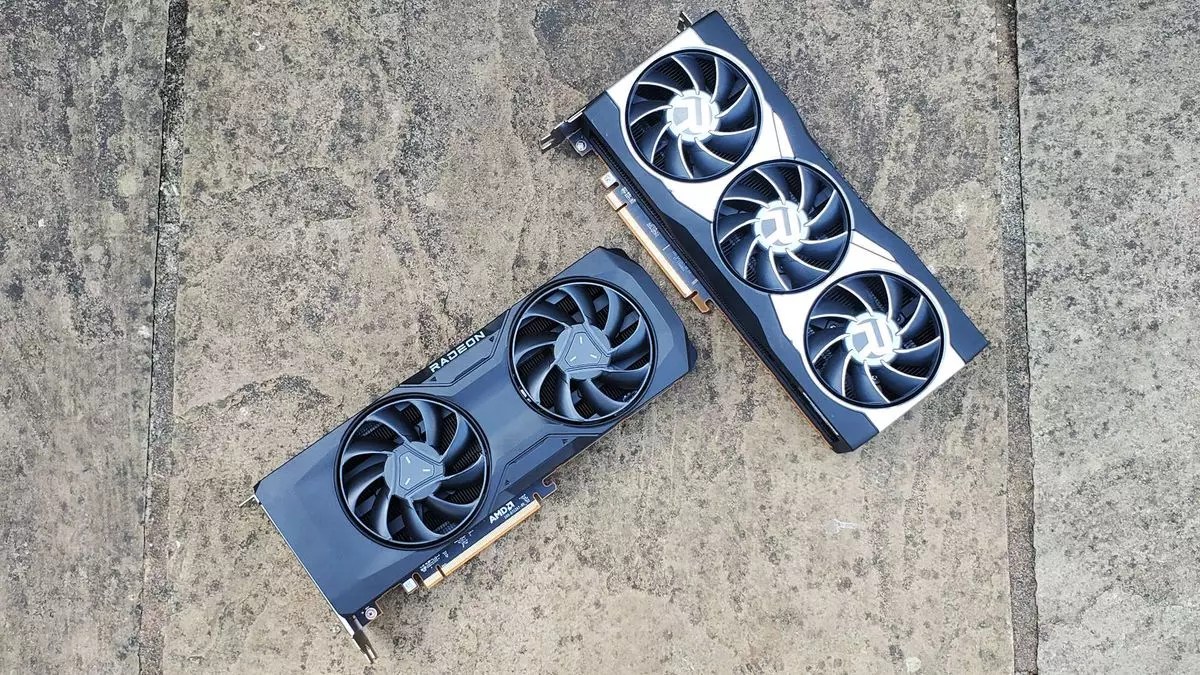AMD, once a formidable contender in the graphics processing unit (GPU) market, finds itself facing significant challenges in the gaming graphics segment. Despite the company’s promising growth in other areas, particularly in CPUs for data centers and client PCs, its performance in the gaming GPU sector continues to falter. This conundrum raises pressing questions about AMD’s strategy and the future of its graphics technology.
In an earnings call that coincided with CEO Lisa Su’s decade-long leadership anniversary, AMD reported an impressive record revenue of $6.8 billion for the third quarter. This milestone was largely driven by a surge in data center CPUs and GPUs, alongside strong performance in laptop and client PC CPUs. Yet, it was a bittersweet victory as gaming revenue plummeted by a staggering 69% year-over-year, plummeting to just $462 million, a mere fraction of AMD’s total revenue.
This stark decline prompts scrutiny of the broader gaming landscape. The downturn can be partially attributed to the cyclical nature of console sales, particularly as the Xbox and PlayStation begin to show their age. There is cautious optimism, however, surrounding the anticipated release of the PS5 Pro, potentially indicating a short-term recovery in gaming hardware sales.
Despite the backdrop of overall company success, AMD’s struggles with PC gaming graphics remain a significant concern. Industry observers note that the company has been facing declining market share in this segment, particularly compared to its primary competitor, Nvidia. AMD’s executive team has consistently acknowledged this decline, citing it as a gradual trend rather than an unexpected anomaly. Su’s comments hinted that the revenue drop was anticipated as the company prepares for a transition to the next-generation RDNA 4 architecture. The potential advantages of RDNA 4, including enhanced gaming performance, advanced ray-tracing capabilities, and AI features, paint a hopeful picture for the future, though they do not mitigate the current downturn.
One possible reason for AMD’s struggle in the GPU market lies in its decision to implement a chiplet architecture. This innovative approach has proven successful for AMD’s CPU lines, allowing for cost-effective and versatile designs. However, the application of chiplet technology in GPU design presents unique challenges. AMD’s previous RDNA 2 architecture, built on a monolithic structure, was competitive across multiple market sectors, but the RDNA 3 series, which shifted to chiplet design, has not performed up to expectations.
Industry analysis suggests that this pivot was perhaps too ambitious and may have been more suited to CPUs than GPUs. Consequently, AMD seems to have reverted to a more traditional monolithic design for RDNA 4, a strategy that could limit its appeal within the high-end market while providing a safer path to restoring competitiveness. The company is said to be contemplating a return to chiplet-based designs with RDNA 5, but this remains speculative.
While AMD grapples with its gaming GPU troubles, it’s worth noting that the company has been redirecting its focus toward the burgeoning AI sector. In a remarkable turnaround, revenues from AI GPUs for training and inferencing have exploded, matching CPU revenues in just a year. This strategic pivot could explain some of the resource allocation issues within AMD, as the company maneuvers to capitalize on the growing AI market’s potential.
However, this diversification raises questions about AMD’s commitment to its gaming GPU line. In a sector where loyalty and consistent product support are paramount, neglecting the gaming aspect could hinder AMD’s long-term aspirations in the graphics market. The concern here is whether AMD’s focus on AI will continue to overshadow its gaming efforts, creating an ongoing void in their GPU portfolio.
Despite the current struggles, AMD is not without resources or a clear path forward. With considerable revenues and a reputation for innovation, the company possesses the means to tackle its GPU challenges head-on. The upcoming launch of RDNA 4 holds promise, but it remains to be seen whether it will adequately address the needs of gamers and compete effectively against Nvidia.
While AMD continues to thrive in various sectors, the ongoing decline in gaming GPU performance is an anomaly in an otherwise strong portfolio. The company must now balance its focus, ensuring that it does not sacrifice long-term opportunities in gaming for immediate gains in AI. The future of AMD’s graphics division hangs in the balance, with the hopes of a vibrant gaming community resting on its ability to adapt and innovate.


Leave a Reply